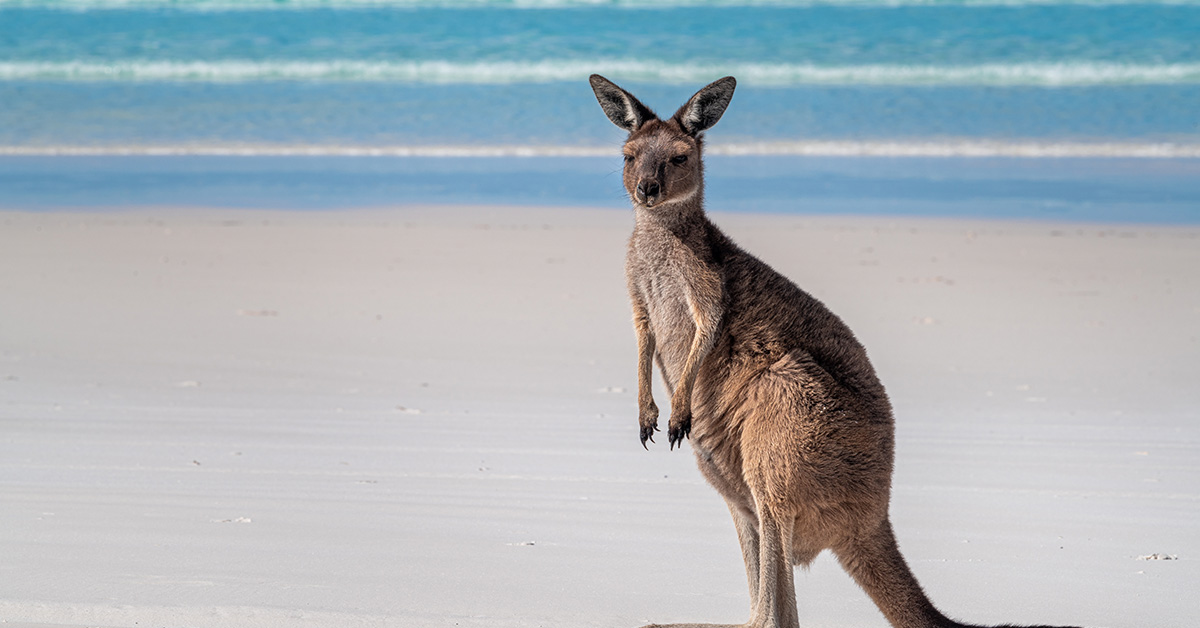Folks, what I want to talk about today is one of the really common questions or conversations I have with our clients. It’s common across the entire tourism and hospitality spectrum—this idea of differentiating yourselves from your competitors, and by doing so, being able to set the price rather than just focusing on whatever the market price is.
Now, if you’re in accommodation, for example, and you can’t clarify what’s different about your bed and breakfast from every other one in town, then you find yourself just competing on price. Your margins get smaller. It takes the fun outta being in business, and it’s just a horrible situation to be in.
But if you can differentiate, if you can show that you are different in some way to the competitors, then you find yourself in a much better position to set the price—be a price maker rather than a price taker. Now, in my experience, one of the best ways of doing this comes from a book that was written by a couple of guys back in the late nineties.
Joseph Pine and James Gilmore. The book they wrote was called The Experience Economy: Work is Theatre and Every Business’s a Stage, which sounds pretty exciting. Now, the premise of the book was that every business fits into one of five levels.
The Five Levels of Business
At the first level, that’s where you’re dealing in commodities. Things that there is no way of differentiating one to the other. Let’s use agritourism as an example because we work with a lot of agritourism operators.
You’re a potato farm if you’ve grown however many hundreds of tons of potatoes, and they’re no different to the farm on the other side of town or on the other side of the country that’s growing that same variety of potato. It’s a commodity. There’s no difference between them, and you’re gonna find yourself in a position where you’re selling them in bulk, and you’re essentially just taking whatever the market price is.
We hear about market prices of fuel and how it goes up and down based on production and demand. If you’re just selling a commodity, that’s the cycle that you’re stuck in, and really all you can sort of look to focus on is building your efficiencies and yield maximization and that type of stuff.
So if we stick with that farm example, we’re talking about potatoes. But what if that potato farmer takes some of those potatoes and he cleans them up and peels them and cuts them up and bags them up as frozen french fries? It’s a product. It’s tangible, it’s standardized.
Again, he’s still focused on quality control and efficiency, but there’s an element of branding and packaging and things involved as well. I don’t know what the current market rate of potatoes is, but let’s say it’s $1 a kilo—I know that’s really cheap, but $1 a kilo for now for his branded packaged frozen potato chips or french fries.
Maybe he’s charging $1.50 or $2 or $3 a kilo. He’s put a little bit more effort in, but the reward on the other side, if it’s done well, grows exponentially. But now again, it’s still just a good; it’s a packaged good. But what if we take it the next step further, and some of those french fries that are being cut up, they don’t go into the bag. They stay on the farm, and he sells them at his farm gate shop cooked—has cooked french fries drizzled with aioli or tomato sauce and some salt and pepper, whatnot. It’s become a service. So instead of going from a tangible, physical product, you’re now providing a service.
Again, the value that’s been put into it is greater. It costs more to produce, but you also get to charge a huge amount more than what you were when you were just selling potatoes. Now you’re looking at efficiency in your delivery. You’re looking at hospitality and customer service and all these types of things.
But what if we take it up a little bit further? Let’s say in the corner of the farm, up on top of the hill or whatever, there’s a nice row of trees and some nice grass area, and we set ourselves up a long table there. Instead of just selling a basket of potato chips in a can of Coke or whatever, it becomes more of an experience where you’re focused on the farm to table dinner experience, where the person who’s cooking the chips for the guests who have had to book in is talking about the work that goes into producing the potatoes, sorting them, categorizing them, cleaning them, et cetera. It becomes more of an experience that people have to pre-book for.
Your focus is on engagement and theming and the sort of sensory appeal, authenticity, because people are involved in this thing that’s happening on the farm. But then that last level, level five, is transformations, and this is where you’re trying to create a sustainable change—ideally in society as a whole, but in your customers.
Now, maybe this is a bit of a silly example, but what about some sort of potato masterclass where people come and they stay on the farm for two or three days, and instead of just sitting at a dinner table and hearing about how these things happen, actually getting involved in the process of digging the potatoes up from the ground, cleaning them, sorting them, categorizing them, and then getting involved in the cooking and the preparation and all of that kinda stuff that goes into it.
You’re not just creating memories, which is what you were doing at the experiences level, which is level 4. At level 5, you’re creating a transformation. You’re creating change in these people so that they become brand advocates. They become ambassadors for your subject.
Summary of the Progression of Economic Value
| Stage | Commodities | Goods | Services | Experiences | Transformations |
| Definition | Extracted/grown raw materials | Manufactured tangible products | Intangible activities performed for customers | Memorable events staged to engage customers personally | Customized experiences guiding customer change/aspirations |
| Key Characteristics | Fungible, undifferentiated, natural | Tangible, standardized or customized, inventoried | Intangible, perishable, co-produced, deeds/efforts | Memorable, personal, revealed over duration, sensations | Efficacious, life-altering, sustained, guided, aspirational |
| Nature of Offering | Undifferentiated | Differentiated | Customized | Personalized | Highly Personalized & Co-created |
| Customer Value Proposition | Basic utility, availability | Features, functionality, quality, ownership | Convenience, expertise, “time well saved” | Engagement, sensation, memories, “time well spent” | Desired outcome, personal growth, “a better me” |
| Competitive Differentiators | Price, access | Branding, design, features, quality | Service quality, customization, responsiveness | Theming, sensory engagement, dramatic staging, authenticity | Efficacy of guidance, depth of customization, proven results |
| Pricing Basis | Market price (e.g., per bushel, per ton) | Cost-plus, retail price (e.g., per item) | Fee for service, hourly rate (e.g., per activity) | Admission fee, premium pricing (e.g., per event/time) | Fee for outcome, membership (e.g., per transformation) |
Applying the Levels to Your Business
Now I know what you might be thinking. This is all good and well, but I don’t own a potato farm, but in every element of business, you are in one of those 5 levels, and whatever level you’re in, with a couple of small changes, you could find yourself moving up and down. Obviously up is really where you want to be, because if you’re moving back down into commodities, then again, you’re at the whim of the market.
If you’re trying to create yourself a business that’s enjoyable and has a decent profit margin, then what you should be looking to do is go up those levels from 1 to 5, because that’s where the magic happens. Now, it isn’t necessarily always easy to go from stage 1 to stage 5. You don’t need to be changing your whole business all at once.
Again, no matter what business you’re in, there will be elements of this stuff that can be applied in a small way. So for example, accommodation providers, if you are offering a budget roadside motel where your rooms are no different to every other one in town, you’re at that commodity goods services level.
There isn’t really a great difference between you and the others, and you’re gonna find yourself competing on price, but what can you implement or integrate into your offering that takes it from being just a service—just a bed and a pillow and a room to sleep for tonight—and creates something that’s a little bit more of an experience?
Or if you’re a restaurant, an Italian restaurant selling spaghetti and pizza, then, if that’s all that you’re really valuing yourself at, again, it’s a service, and you’re focused on your customer service and your efficiency of delivery and whatnot, but what could you perhaps change a little bit that makes it more of an experience?
Maybe instead of having your set menu of pizzas, the customers can be a little bit more involved in terms of designing what goes into their pizza, or maybe you can revolutionize the business as a whole and get involved where people are coming in and they’re helping make the pizza because your big focus is on personalization and guiding them with your expert knowledge and what goes into making a great pizza so that the pizza that you’re producing yourself as a customer is just for you and it’s exactly the way you wanted it to be.
But with that expert guidance, you end up with a fantastic quality product. So I understand this all sounds a little bit theoretical. Turning these things from theory into practice is not always easy. My advice is to break it down into small steps, and if you are looking for support, looking for some assistance in making this happen, that’s what the team here at Scott Aussie Tourism Marketing are here for.
So if you have any questions, feel free to reach out and we’re happy to help. Talk to you later.










